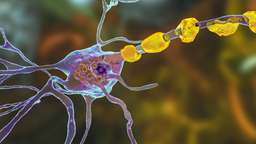Chlorophenyl Inhibitors of Glucosylceramide Synthase
TECHNOLOGY NUMBER: 2019-311

OVERVIEW
A novel approach for treatment of neuronopathic and peripheral lipid storage diseases- Research tool for in vitro and in vivo model of glucosylceramide synthase inhibition
- Potential therapy for renal disease, cardiovascular disease, and cancer
BACKGROUND
While lipids are important parts of cellular membranes and help to form myelin sheaths that protect nerves, inappropriate accumulation of fatty materials in various cells and tissues in the body can lead to lipid storage diseases. These illnesses are hereditary metabolic disorders in which excessive amounts of lipid cause dysfunction following collection in organs such as the brain, peripheral nervous system, liver, spleen, and bone marrow. Enzyme deficiencies in distinct sites of cellular lipid metabolism can cause maladies including Gaucher's disease, Niemann-Pick disease, Tay-Sachs disease, Fabry's disease, Farber's disease, Sandhoff disease, Krabbe disease, Metachromatic leukodystrophy, Wolman's disease, and cholesteryl ester storage disease.
Glycosphingolipids reside in the cell membrane and are involved in cell adhesion as well as cell-to-cell interactions. Dysregulation of glycosphingolipids not only causes lipid storage diseases, but it can also lead to renal dysfunction, cardiovascular disease, and cancer. The first committed biosynthetic step in the production of glycosphingolipids relies on an enzyme named glucosylceramide synthase (GCS). GCS inhibition serves as a mechanism to treat certain lipid storage diseases, and enzyme replacement therapy (ERT) is available to help address the manifestations of Fabry disease and Gaucher's disease. However, clinical outcomes following the use of these medicines are imperfect, and a need exists for novel and improved methods to treat metabolic abnormalities related to glycosphingolipids.
INNOVATION
University of Michigan researchers have developed novel inhibitors of glucosylceramide synthase which have potential as treatments for neuronopathic and peripheral lipid storage diseases as well as other illnesses caused by dysregulation of glucosylceramide synthase. These glucosylceramide synthase inhibitors show promise for treatment of a wider variety of lipid storage disorders than currently available compounds which are only indicated for a few types of these diseases. The new agents can investigate the biological effects of glucosylceramide synthase inhibition using in vitro and in vivo models. These GCS inhibitors may also hold promise to treat renal disease, cardiovascular disease, and cancer.